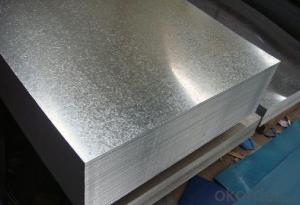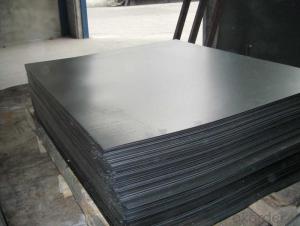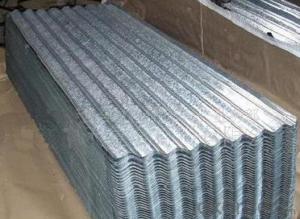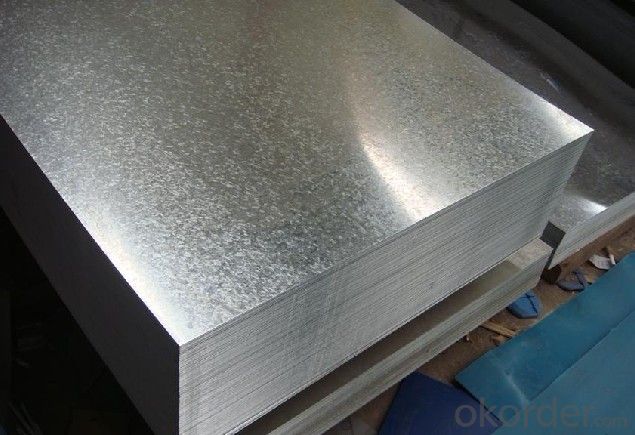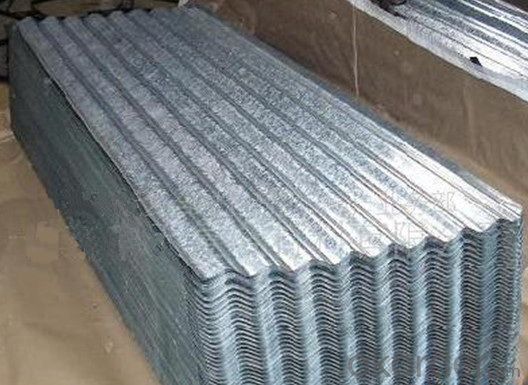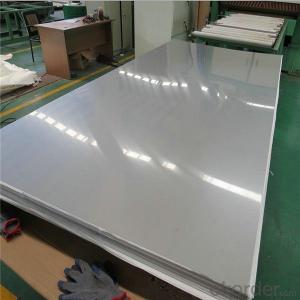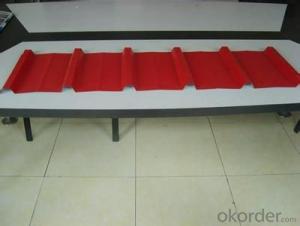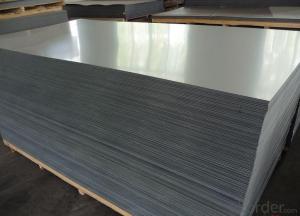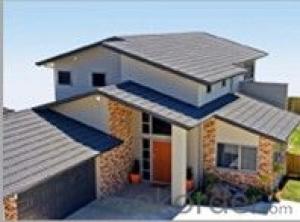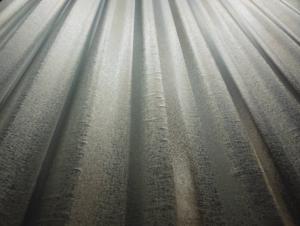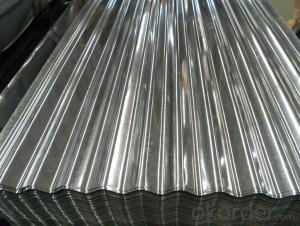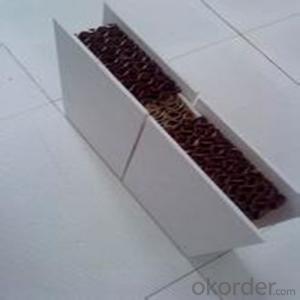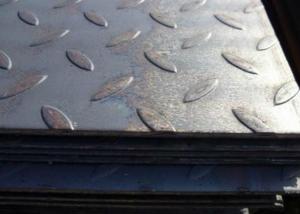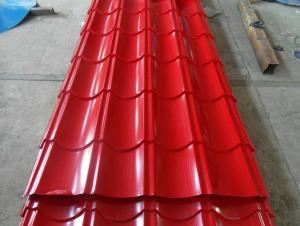Gavanized steel sheets
- Loading Port:
- China Main Port
- Payment Terms:
- TT OR LC
- Min Order Qty:
- -
- Supply Capability:
- -
OKorder Service Pledge
Quality Product, Order Online Tracking, Timely Delivery
OKorder Financial Service
Credit Rating, Credit Services, Credit Purchasing
You Might Also Like
Specifications
GI Steel Sheet
thickness:0.135-1.5mm
width:600-1250mm
material:Q195, Q235, Q345B, SGCC, DX51D
ISO
- Q: What is the average lifespan of a painted steel sheet?
- The average lifespan of a painted steel sheet can vary depending on various factors such as the quality of the paint, the environment it is exposed to, and the maintenance it receives. However, on average, a well-maintained painted steel sheet can last anywhere from 20 to 50 years. It is important to note that regular inspections, cleaning, and touch-up painting can help prolong the lifespan of a painted steel sheet. Additionally, factors such as exposure to harsh weather conditions, extreme temperatures, or corrosive environments can significantly impact the longevity of the paint and the sheet itself.
- Q: Are steel sheets corrosion-resistant?
- Yes, steel sheets can be corrosion-resistant depending on their composition and treatment. Stainless steel, for example, is known for its excellent corrosion resistance due to its high chromium content. This chromium forms a protective oxide layer on the surface that prevents further corrosion. Galvanized steel sheets are also corrosion-resistant as they are coated with a layer of zinc that acts as a barrier against corrosion. However, it is important to note that the corrosion resistance of steel can vary depending on factors such as the environment, exposure to chemicals, and maintenance. Regular inspection and maintenance are necessary to ensure the long-term corrosion resistance of steel sheets.
- Q: What is the thermal conductivity of stainless steel sheets?
- The thermal conductivity of stainless steel sheets ranges from approximately 14.4 to 19.0 watts per meter-kelvin (W/m·K), depending on the specific grade and composition of the stainless steel.
- Q: What is the density of steel sheets?
- The density of steel sheets typically ranges from 7.8 to 8.1 grams per cubic centimeter.
- Q: What are the different surface treatments available for steel sheets?
- There are several surface treatments available for steel sheets, including galvanizing, electroplating, powder coating, and painting.
- Q: What is the difference between a galvanized and stainless steel sheet?
- Galvanized and stainless steel sheets are both types of steel sheets that are used in various applications. However, there are some key differences between these two materials. One major difference is their resistance to corrosion. Galvanized steel sheets are coated with a layer of zinc to protect them from rust and corrosion. This makes them ideal for outdoor applications or environments with high humidity or moisture. On the other hand, stainless steel sheets are made with a combination of chromium and other alloys, which gives them superior corrosion resistance. They can withstand exposure to chemicals, acids, and saltwater, making them suitable for highly corrosive environments. Another difference is their appearance. Galvanized steel sheets have a characteristic silver-gray color due to the zinc coating. Over time, the zinc coating can develop a dull, weathered look. On the contrary, stainless steel sheets have a distinct, shiny appearance that can vary depending on the type of finish applied. This makes stainless steel sheets more aesthetically pleasing and suitable for applications where appearance matters. In terms of strength and durability, stainless steel sheets tend to be stronger and more durable than galvanized steel sheets. Stainless steel has a higher tensile strength, which means it can withstand more force or pressure before breaking. Additionally, stainless steel is more resistant to dents and scratches compared to galvanized steel. Cost is another factor to consider when choosing between galvanized and stainless steel sheets. Galvanized steel sheets are generally more affordable than stainless steel sheets. This makes them a cost-effective option for applications where corrosion resistance is not a top priority. On the other hand, stainless steel sheets are more expensive due to the higher cost of raw materials and the additional processing required to create the stainless steel alloy. In summary, the main differences between galvanized and stainless steel sheets lie in their corrosion resistance, appearance, strength, and cost. Galvanized steel sheets offer good corrosion resistance at a lower cost, while stainless steel sheets provide superior corrosion resistance, strength, and a more attractive appearance at a higher price point.
- Q: How are steel sheets protected during transportation by sea?
- Steel sheets are protected during transportation by sea through various measures to ensure their safety and prevent damage. One of the most common methods used is the application of a protective coating on the steel sheets. This coating acts as a barrier against moisture and saltwater, which are the primary causes of corrosion during sea transportation. The coating can either be a temporary solution, such as a layer of oil or wax, or a more permanent solution, such as a layer of paint or zinc. Additionally, steel sheets are often packaged in bundles or placed in shipping containers to provide added protection. These bundles are secured with straps or wires to prevent movement and potential damage during rough sea conditions. The shipping containers themselves are designed to withstand the rigors of sea transportation and protect the steel sheets from exposure to the elements. Furthermore, steel sheets may be wrapped in plastic or other waterproof materials to provide an extra layer of protection against moisture. This helps to prevent the sheets from coming into direct contact with seawater or rain, reducing the risk of corrosion. During loading and unloading, proper handling techniques are employed to minimize the risk of damage. Cranes or forklifts are used to lift and move the steel sheets carefully, ensuring that they are not dropped or subjected to excessive force that could cause dents or bends. Overall, a combination of protective coatings, secure packaging, and proper handling techniques are employed to safeguard steel sheets during transportation by sea, reducing the chances of damage and ensuring that they arrive at their destination in optimal condition.
- Q: How do steel sheets handle weathering?
- Steel sheets have been designed to effectively handle weathering. Typically, they are coated with a protective layer, such as zinc or a combination of zinc and aluminum, which creates a barrier against moisture and other environmental elements. This coating, known as galvanization, prevents the steel from corroding or rusting when exposed to rain, snow, and other forms of precipitation. Aside from the protective coating, various chemical processes are used to enhance the steel sheets' resistance to weathering. These processes may involve applying primers, paints, or sealants that further shield the steel from moisture, UV radiation, and extreme temperature fluctuations. Furthermore, the composition of steel itself contributes to its ability to withstand weathering. Steel is primarily comprised of iron, carbon, and other elements, forming an alloy that provides inherent strength and durability. This structural integrity enables steel sheets to resist deformation, cracking, or warping caused by weather-related stresses. However, it is important to acknowledge that even the most well-protected steel sheets may gradually experience some degree of weathering over time. Harsh environmental conditions can gradually degrade the protective coating, resulting in the formation of small areas of rust or corrosion. Regular maintenance, such as cleaning, inspecting, and reapplying protective coatings, can help extend the lifespan of steel sheets and preserve their resistance to weathering.
- Q: Are the steel sheets suitable for architectural applications?
- Yes, steel sheets are suitable for architectural applications due to their durability, strength, and versatility in various construction projects such as roofing, cladding, and structural frameworks.
- Q: Can steel sheets be used in the energy sector?
- Yes, steel sheets can be used in the energy sector. Steel is a versatile material that offers several advantages for various applications in the energy industry. It is commonly used in the construction of power plants, transmission towers, and infrastructure for renewable energy sources such as wind turbines and solar panels. In power plants, steel sheets are used in the fabrication of boilers, turbines, and other components. Steel's high strength and durability make it suitable for withstanding the high temperatures and pressures involved in power generation processes. It also offers resistance to corrosion and erosion, ensuring the longevity of critical equipment. Steel sheets are also utilized in the construction of transmission towers and substations. These structures support power transmission lines and facilitate the efficient flow of electricity across long distances. Steel's strong mechanical properties make it an ideal choice for these applications, as it can withstand the weight and stresses imposed by power transmission infrastructure. Furthermore, steel sheets are vital in the manufacturing of wind turbines and solar panels. In wind turbines, steel is used for the tower structure, which must be strong enough to support the weight of the rotor and withstand the loads from wind forces. Additionally, steel sheets are used in the construction of solar panel frames, providing rigidity and stability for the photovoltaic modules. Overall, steel sheets are widely used in the energy sector due to their strength, durability, and resistance to various environmental factors. The versatility of steel makes it a reliable choice for a range of applications, helping to support the generation and transmission of energy in both conventional and renewable energy sources.
Send your message to us
Gavanized steel sheets
- Loading Port:
- China Main Port
- Payment Terms:
- TT OR LC
- Min Order Qty:
- -
- Supply Capability:
- -
OKorder Service Pledge
Quality Product, Order Online Tracking, Timely Delivery
OKorder Financial Service
Credit Rating, Credit Services, Credit Purchasing
Similar products
Hot products
Hot Searches
Related keywords
